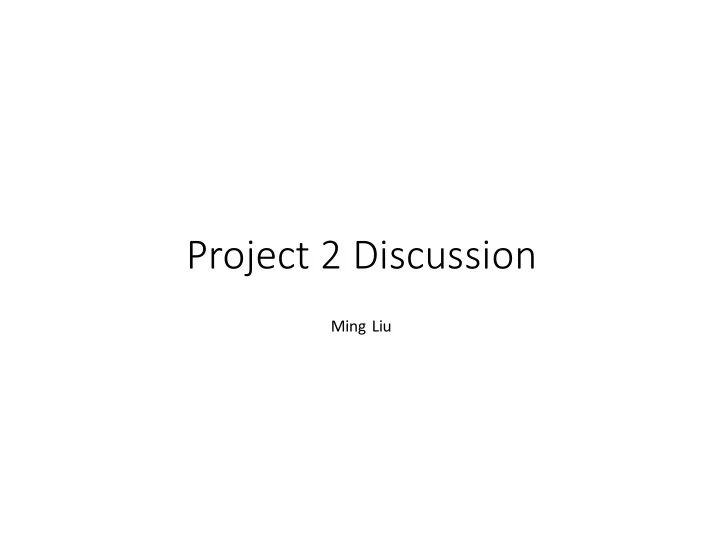

Project 2 Discussion Ming Liu
Project Overview • In this assignment, you will implement a HTTP proxy that passes requests and data between multiple web clients and web servers, concurrently. ü Capable of both relaying HTTP requests and HTTP CONNECT tunneling ü For non-CONNECT HTTP requests, you'll slightly edit the HTTP request header and communicate between the web browser and the origin server ü For CONNECT HTTP requests, you'll establish a TCP connection between the browser and the remote server then any data can be passed through ü Capable of handling the traffic caused by real user browsing
HTTP • The Hypertext Transfer Protocol (HTTP) is the protocol used for communication on this web • It defines how your web browser requests resources from a web server and how the server responds ü Version 1.0 of the HTTP protocol ü RFC 1945 • HTTP communications happen in the form of transactions ü A client sending a request to a server and then reading the response
HTTP request and response message format • An initial line (a request or response line, as defined below) • Zero or more header lines • A blank line (CRLF) ü The initial line and header lines are each followed by a "carriage-return line-feed" (\r\n) signifying the end-of-line • An optional message body
HTTP protocol
Demo • telnet www.washington.edu 80 ü Telnet is an application layer protocol
HTTP Proxy • Proxies are an example of the use of "interposition" - placing something between two things that communicate using a well-defined interface. ü Monitoring or debugging (by capturing a log of browser requests and server responses) ü Improve performance by maintaining a cache of web pages ü Enforce some policy about which sites can be accessed.
More proxy example: FB Memcached
Assignments Details 1 • Fetch the request page from the origin web server and return it to the browser • Print out the first line of each HTTP request • Demo
Assignments Details 2 • Determine the web server’s address ü Parse the header and find the Host line • Turn off keep-alive ü keep-alive à close • Change HTTP version ü Lower the version of the request to HTTP 1.0 • HTTP CONNECT tunneling ü A two-hop TCP connection between the client and some server via Proxy ü Forward to the server any bytes it receives after the request header on its connection with the client ü Forward to the client any bytes it receives on its connection with the server
Restrictions • TCP socket • Any method • Any language • run script • Testing ü Configuring the Firefox ü Check sample outputs à Don’t need to be exactly the same. • Demo
Recommend
More recommend